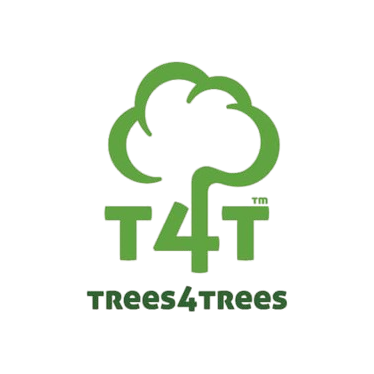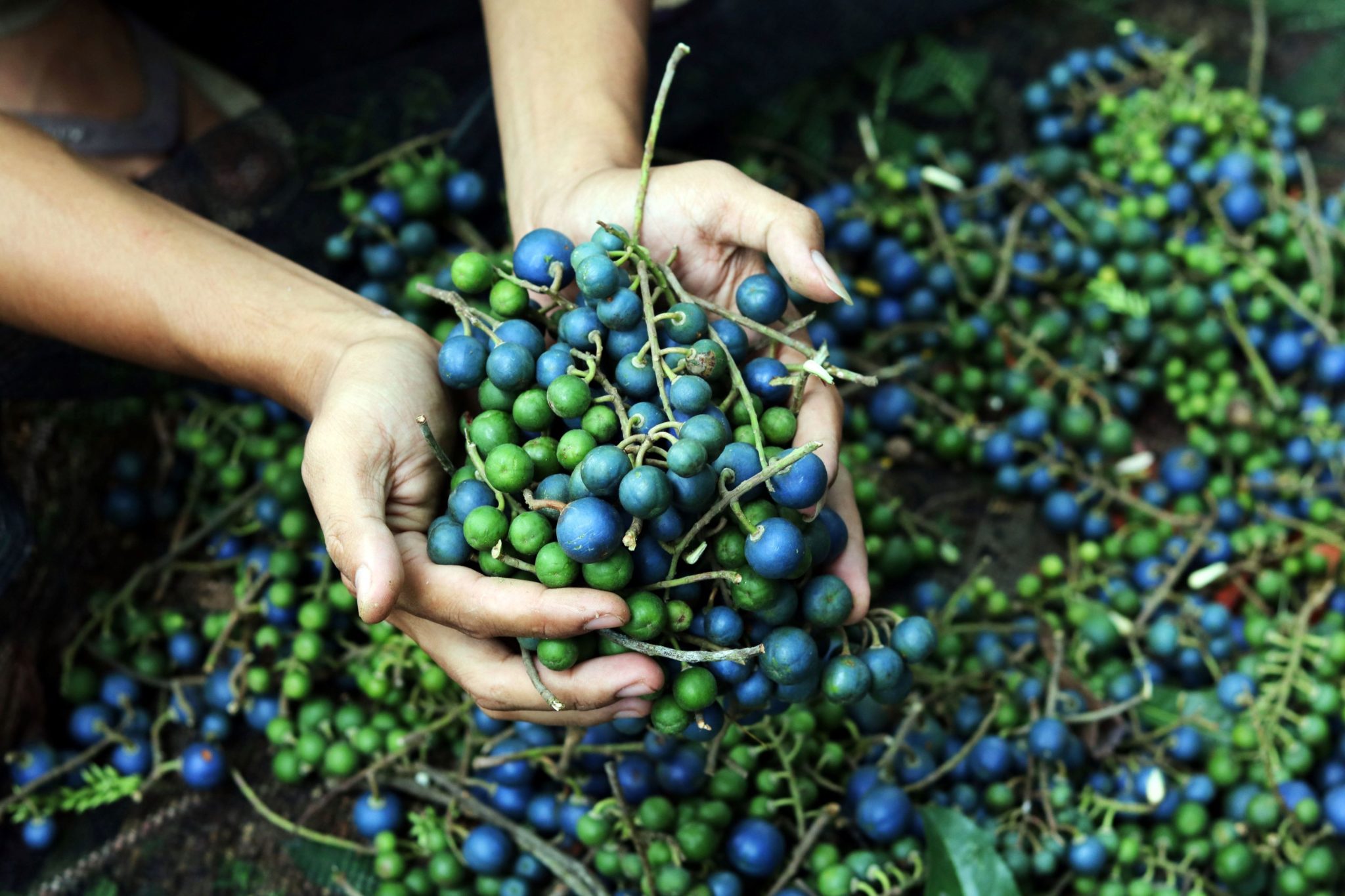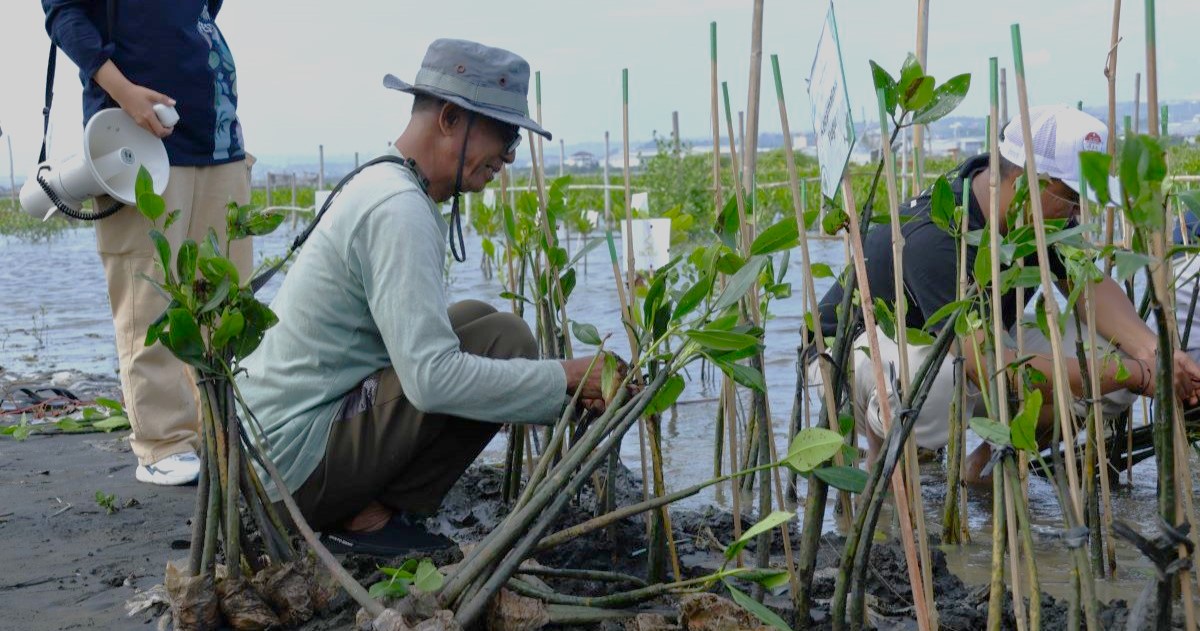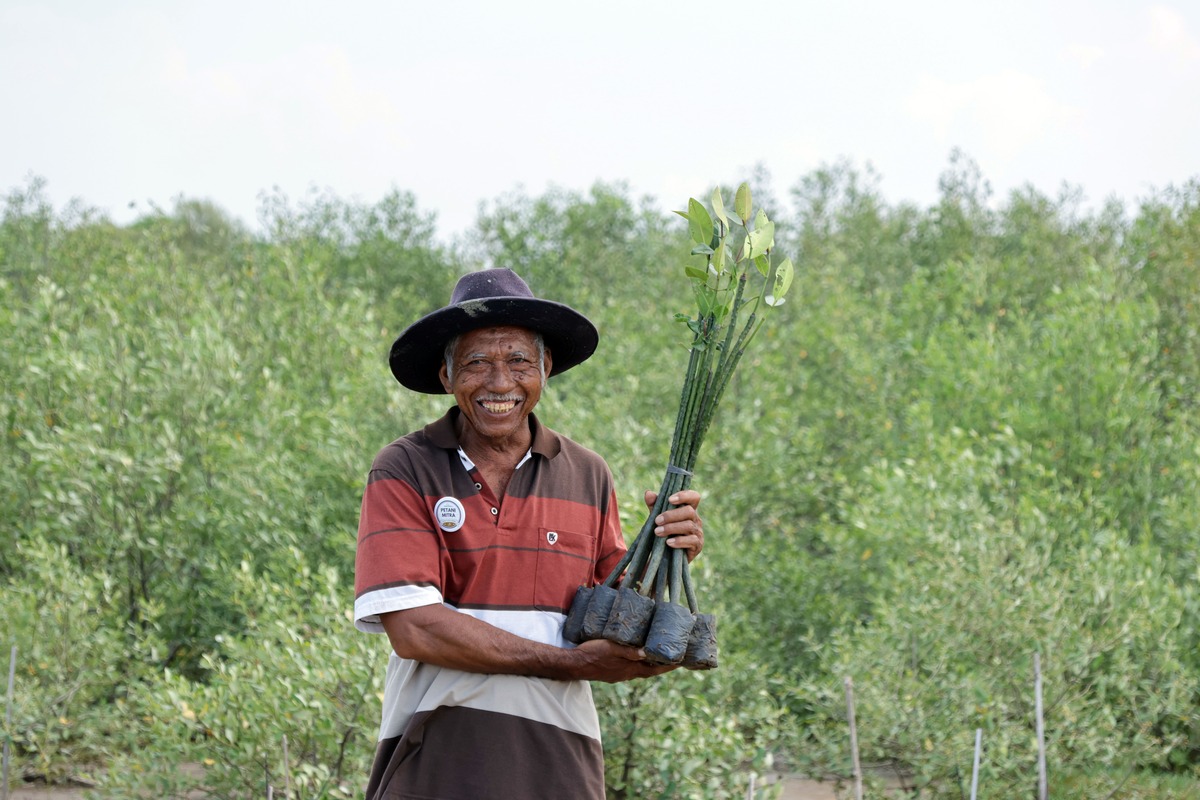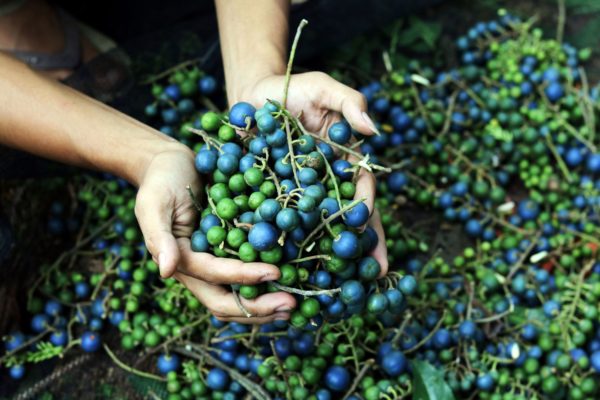
“I find my soul is at more peace in the village than in the big city.” For as long as he can remember, Tasum (45) has had his heart set on being a farmer. In his youth, most of his friends were attracted to the bright lights of the big city. Tasum briefly followed the same path and got a job in a hardware store in Jakarta. But before too long, he realized urban living was not for him, and went home to Selogiri Village in the greenery of Kebumen Regency, Central Java.
What he found on his return was a sense of purpose. He set himself up on a plot of land belonging to his family and started cultivating rudraksha trees (Elaeocarpus ganitrus). Seedlings he planted grew and flourished, blossoming into the realization of a lifelong dream.
Understanding the True Value of Trees
Rudraksha trees are revered in India – the Sanskrit name comes from the hard, spherical stones of its fruit, which are commonly used as prayer beads by Hindus, Buddhists, and Sikhs. When ripe, they’re covered by an iridescent blue outer fruit, which gives them their other name: blueberry beads.
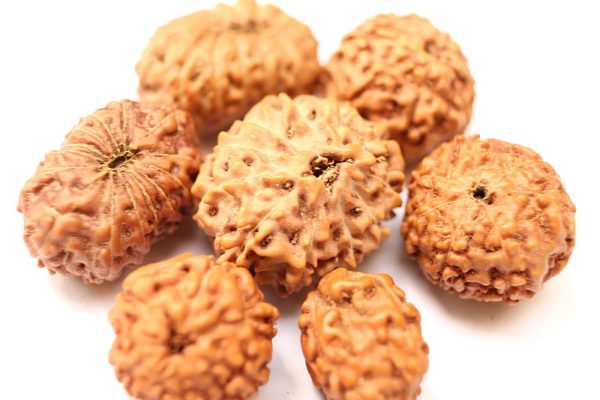
In Selogiri Village, the tree is known as the jenitri (or ganitri) tree. It is no less sacred to the people of Java, as it puts food on their table. The dried fruit seeds are highly prized commodities, used for necklaces, bracelets, and prayer beads.
According to Tasum, the value of the seed lies in its distinctive whirling patterns (mukhi). “The more patterns on it, the more expensive it becomes,” he explains. The fruits are not only prized for their spiritual significance, but also for their medicinal properties (again, mukhi is the key: more swirls = stronger healing energy).
Large quantities of Tasum’s crop go on to be sold abroad, with India being the most common destination, followed by Nepal and China. The income has been a blessing for local farmers, who have only recently begun to appreciate the potential – and the true value – of these trees.
A single tree can produce around 6,000 to 10,000 seeds in a season, which can bring in an average of between $12 and $20. Sometimes, the trees provide more unique patterns that fetch a higher price. “2015-2017 was the golden period,” he remembers. “I sold some of these for as much as $2 to $6 per fruit!,” Like the eventual buyers of his crop, Tasum sees these natural treasures as gifts from God.
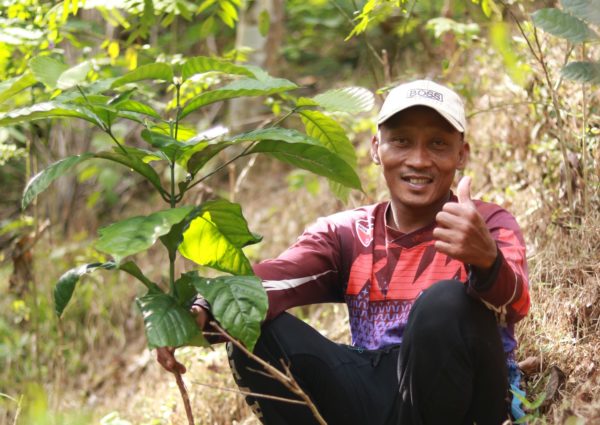
Hard Graft: Working Together to Find Sustainable Alternatives
Many older farmers in Tasum’s village plant cash crops. But he believes fruit tree farming offers a more sustainable way to go; it’s also more efficient, and potentially more profitable.
“If I plant fruit trees, I can harvest the fruits or seeds, while the trees remain intact,” he explains. “For me, cutting down even one tree is a great loss.”
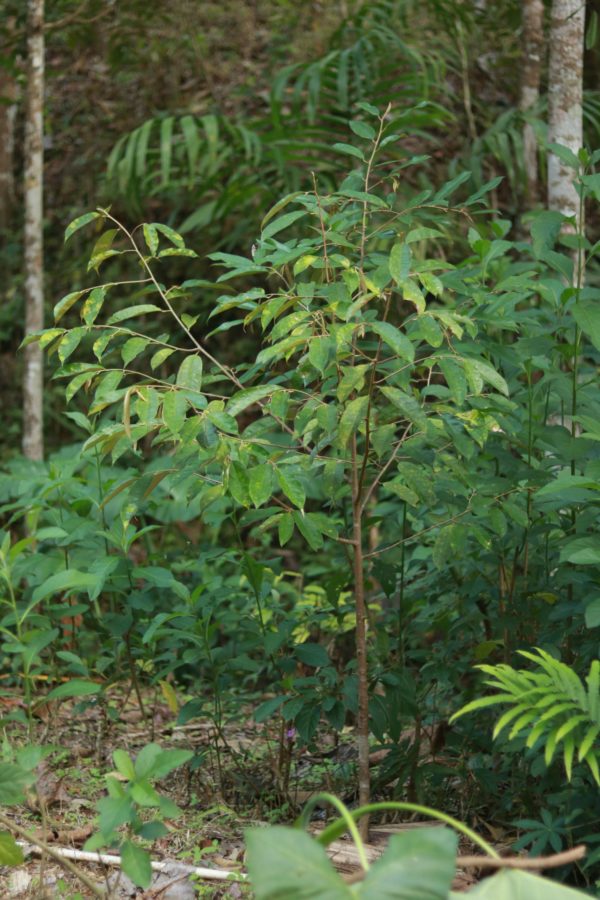
By using grafting techniques, Tasum has been able to expand his plantation of rudraksha trees to around 300 individual plants. He also grows other fruits such as durian, avocado, and coffee.
In 2021, with the support of Plant for The Planet (PFTP) as the sponsor, he joined Trees4Trees to help expand our reforestation efforts. Since then, he’s planted hundreds of seedlings. While profit he makes is a big bonus, Tasum values the long-term benefits trees provide to his village and the surrounding area.
Having uprooted himself once from Selogiri, Tasum is more convinced than ever before that a farmer’s life is for him. Now, with the help of Trees4Trees, he’s putting down roots in more ways than one.
Writer: V. Arnila Wulandani. Editor: Christopher Alexander
